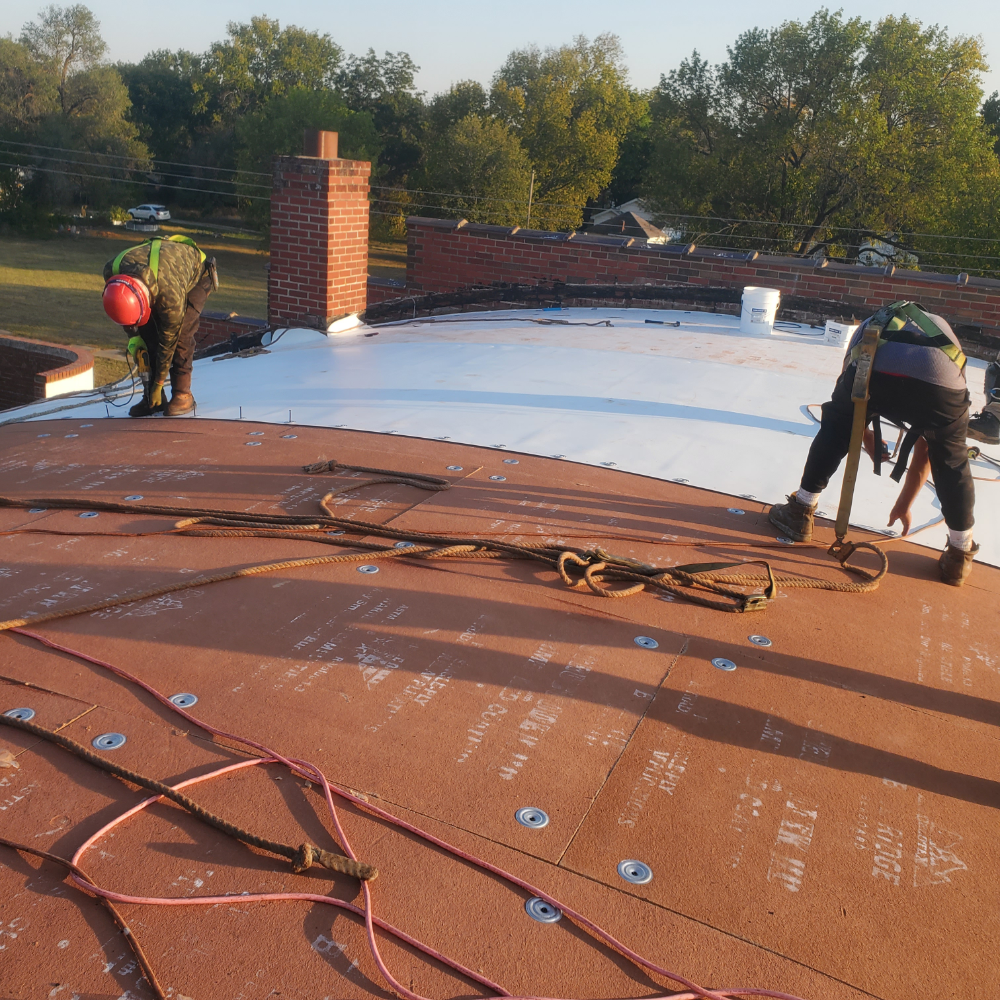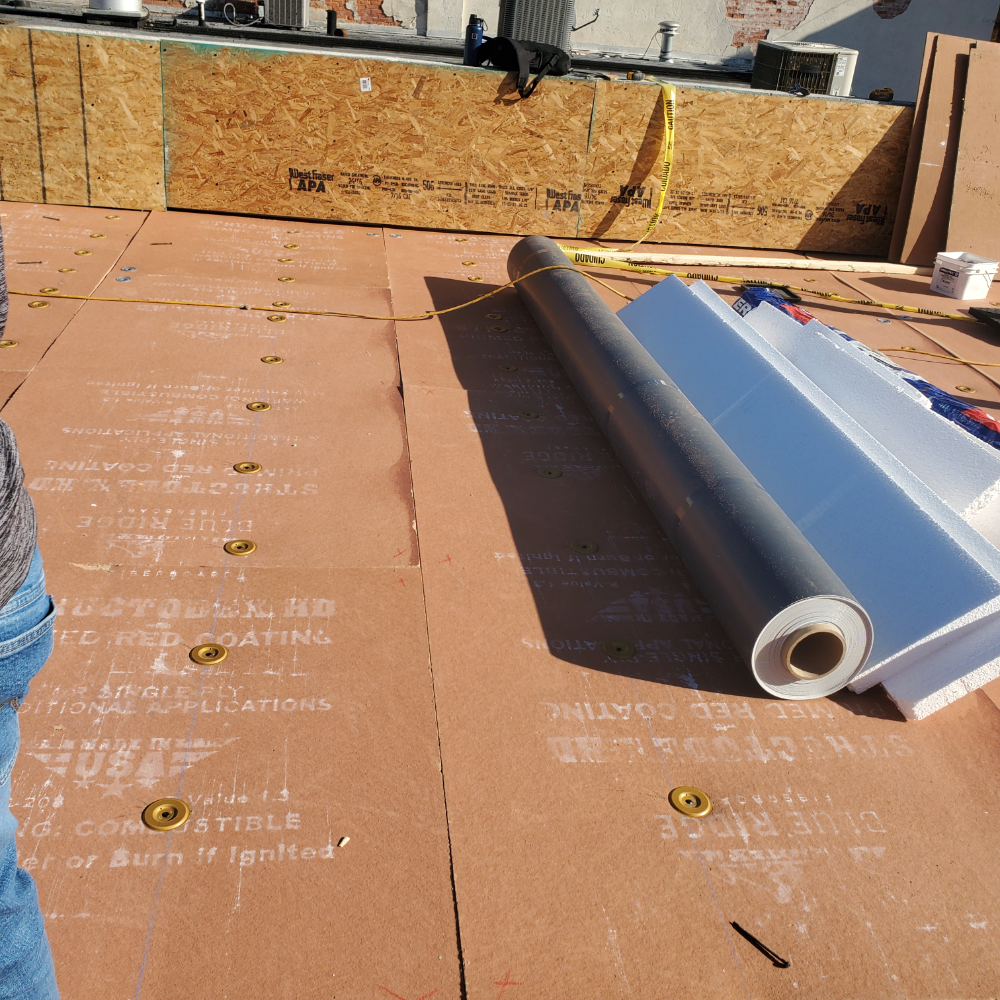If you have done a bit of research on TPO roof systems, you may have come across different attachment methods. It’s not always clear what the benefits , and which one will make the most sense on your building. In this article, we will briefly distinguish between the three most common attachment methods and discuss the benefits and drawbacks of each
Mechanically Attached
Mechanically attached systems are the most common method of membrane attachment. They consist of plates and fasteners placed 12” apart along the membrane seams. Because there is no membrane attachment outside of the seams, manufacturers require 1-2 half-sheets installed along the perimeter of the roof system, as these areas face the most uplift pressure from high winds.
Benefits
- Easy and relatively fast installation
- Most economical system
Limitations
- Lower maximum warranty term length
- Can be not as efficient in handling large uplift forces from wind
- Might not be as aesthetically pleasing as other attachment methods
Fully-Adhered
Fully-adhered TPO systems are installed with bonding adhesive that glues the membrane to the substrate or cover board, which is firmly secured to the roof deck or framing members. These systems require additional insulation plates and fasteners along the perimeter and corners for stronger attachment in these areas.
Benefits:
- Tighter and more aesthetic appearance
- Reduced potential for heat loss from the building
- Potential for increased wind uplift resistance
Limitations:
- More difficult, weather-sensitive, and time-intensive installation, increasing cost
- Membrane/coverboard bond can be weaker than insulation attachment depending on coverboard used
Induction-Welded (Rhinobond)
Induction-Welded TPO systems offer somewhat of a hybrid between mechanically attached and fully-adhered systems. The insulation on these systems is attached similar to fully-adhered systems, but with special Rhinobond plates instead of standard insulation plates. The plates are ultimately welded to the membrane, creating a membrane attachment point at each plate location across the roof.
Benefits:
- Greater distribution of uplift forces across the roof system
- Often fewer total plates and fasteners used than other systems, with no screws penetrating through the membrane
Limitations:
- Induction-welding can become tedious and time-intensive
- Certain deck types require a large quantity of screws and plates
All these attachment methods have their role in the world of low-slope roofing. The right attachment method for you depends on your building’s location, height, use, budget, and objectives. At the end of the day, we recommend relying on a reputable commercial roofing contractor to determine the best TPO attachment style for your building.


